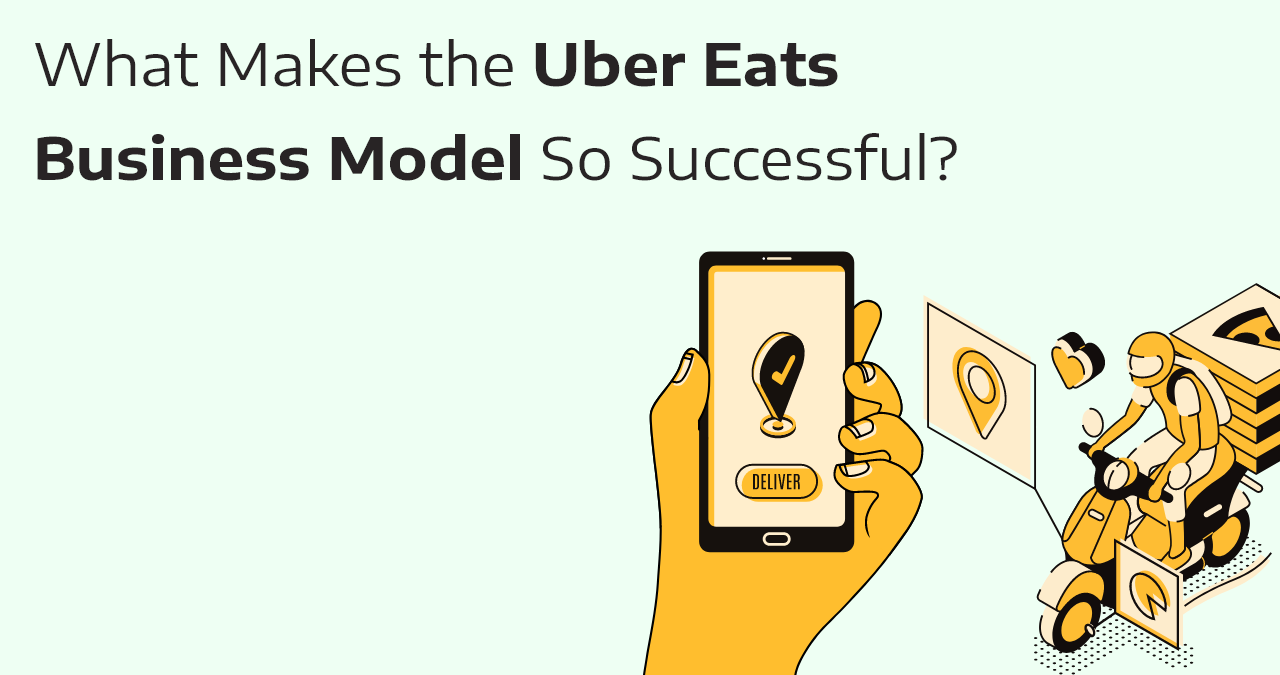What Makes the Uber Eats Business Model So Successful?

Uber Eats has established itself as a leader in the online food delivery app industry, revolutionizing the way people order and enjoy meals. Its success can be attributed to a well-designed business model that effectively addresses the needs of restaurants, delivery partners, and customers. This article explores the key factors that contribute to the success of Uber Eats’ business model and how these elements create a powerful ecosystem that drives growth and profitability.
1. Three-Sided Marketplace
At the core of Uber Eats’ success is its three-sided marketplace, which connects restaurants, delivery partners, and customers. This model creates a balanced and efficient ecosystem where each participant benefits from the interaction with the other two.
-
Restaurants: By partnering with Uber Eats, restaurants gain access to a broader customer base and increased visibility. The platform offers them a valuable channel to reach potential diners who prefer the convenience of online ordering. In return, restaurants pay a commission fee for each order processed through the app, providing Uber Eats with a steady revenue stream.
-
Delivery Partners: Uber Eats employs a network of independent couriers who use their own vehicles or bikes to deliver food. This flexibility allows delivery partners to choose their hours and manage their workload, making the job attractive to a wide range of individuals. The pay-per-delivery model, along with the possibility of tips, provides an incentive for couriers to deliver efficiently and maintain high service standards.
-
Customers: For customers, Uber Eats offers a user-friendly app that provides a convenient way to browse menus, place orders, and track deliveries in real-time. The platform’s extensive selection of restaurants and streamlined ordering process make it easy for users to find and enjoy their favorite meals. Customer satisfaction is a key priority, and Uber Eats continuously enhances its app and services based on user feedback.
2. User-Friendly Technology
Uber Eats invests heavily in technology to ensure a seamless user experience. The app’s interface is designed for ease of use, allowing customers to quickly navigate through restaurant options, place orders, and track deliveries. Real-time updates and notifications keep users informed throughout the process, enhancing their overall experience.
For restaurants and delivery partners, the app provides essential tools to manage orders, track performance, and communicate effectively. For instance, delivery partners receive optimized routes and real-time traffic updates, which help them complete deliveries efficiently. Restaurants benefit from features like order management systems and performance analytics, which help streamline operations and improve service quality.
3. Dynamic Pricing and Promotions
Uber Eats employs dynamic pricing strategies to optimize revenue and manage demand. Delivery fees can vary based on factors such as distance, time of day, and order volume. This flexibility allows Uber Eats to balance supply and demand while maximizing revenue.
Promotional tools also play a crucial role in attracting customers and driving sales. Uber Eats frequently offers discounts, special deals, and bundle offers to encourage orders and build customer loyalty. These promotions not only boost order volumes but also provide restaurants with additional exposure and opportunities to attract new customers.
4. Data-Driven Decision Making
Data is a cornerstone of Uber Eats’ business model. The platform collects and analyzes vast amounts of data related to customer preferences, ordering patterns, and delivery performance. This data-driven approach allows Uber Eats to make informed decisions and continuously improve its services.
For example, data insights help Uber Eats identify popular menu items, optimize delivery routes, and adjust pricing strategies. Restaurants can also benefit from data analysis, using insights to refine their menu offerings, manage inventory, and tailor promotions to customer preferences. This focus on data enables Uber Eats to stay agile and responsive to market trends and customer needs.
5. Scalability and Adaptability
Uber Eats’ business model is designed for scalability and adaptability. The platform can easily expand into new markets and regions by replicating its successful model and adapting to local conditions. Its ability to quickly onboard new restaurants and delivery partners ensures that it can offer a diverse range of dining options and maintain high service standards.
Moreover, Uber Eats continuously innovates and evolves its services to stay ahead of competitors. Whether it’s introducing new features, exploring partnerships, or expanding into new service areas, Uber Eats demonstrates a commitment to growth and innovation.
Conclusion
The success of the Uber Eats business model can be attributed to its effective three-sided marketplace, user-friendly technology, dynamic pricing strategies, data-driven decision making, and scalability. By addressing the needs of restaurants, delivery partners, and customers, Uber Eats has created a powerful ecosystem that drives growth and profitability. Its ability to leverage technology, analyze data, and adapt to changing market conditions ensures that it remains a leader in the online food delivery industry. Understanding these key factors provides valuable insights into what makes Uber Eats so successful and offers lessons for other businesses looking to thrive in the competitive food delivery space.
- Questions and Answers
- Opinion
- Motivational and Inspiring Story
- Technology
- Live and Let live
- Focus
- Geopolitics
- Military-Arms/Equipment
- Securitate
- Economy
- Beasts of Nations
- Machine Tools-The “Mother Industry”
- Art
- Causes
- Crafts
- Dance
- Drinks
- Film/Movie
- Fitness
- Food
- Jocuri
- Gardening
- Health
- Home
- Literature
- Music
- Networking
- Alte
- Party
- Religion
- Shopping
- Sports
- Theater
- Health and Wellness
- News
- Culture

